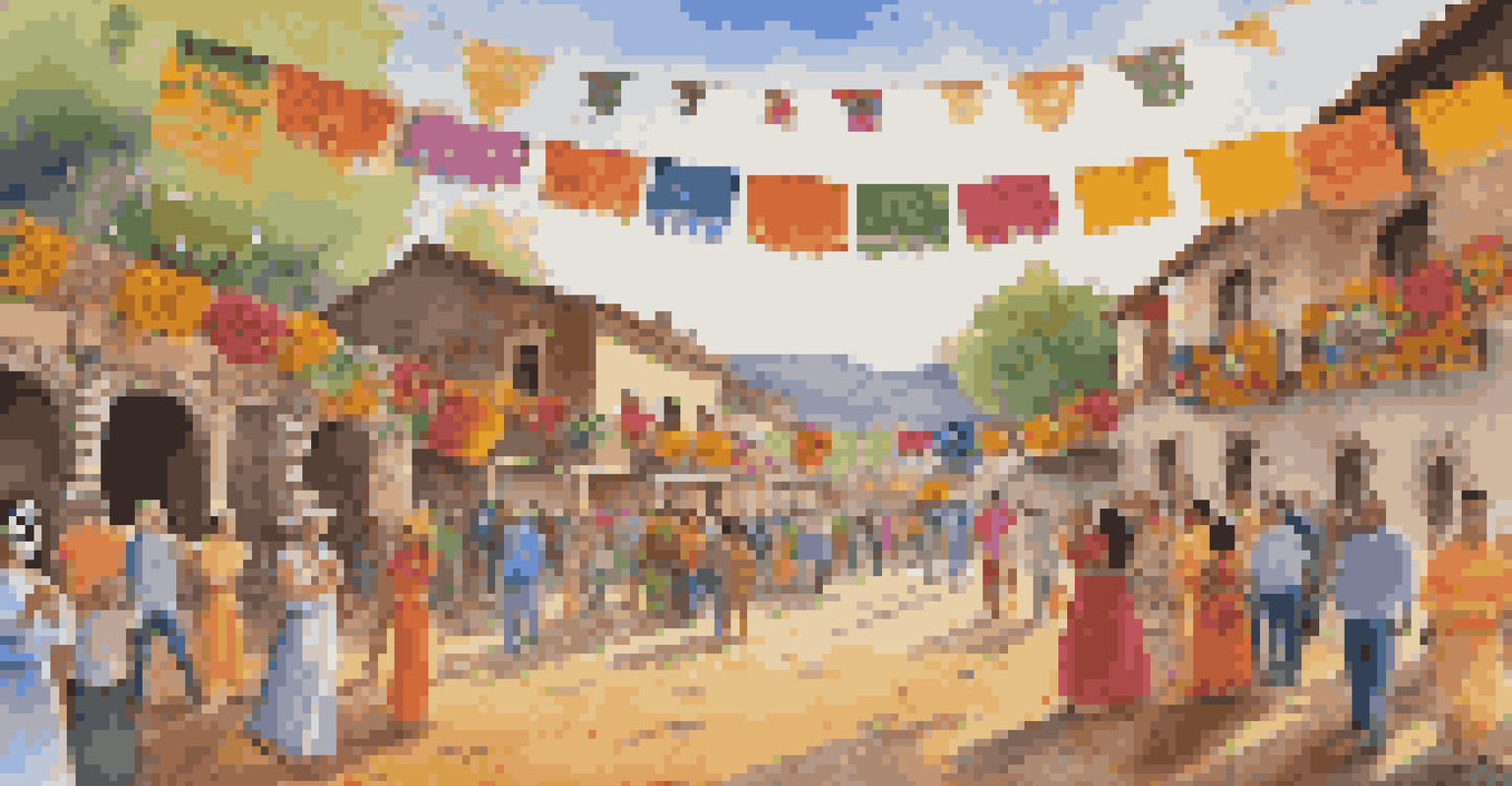Unpacking the Term 'Cultural Appropriation' in Art

Defining Cultural Appropriation in the Arts
Cultural appropriation is a term that often sparks debate, especially in artistic circles. At its core, it refers to the adoption of elements from one culture by members of another culture, typically without permission or understanding. This can manifest in various ways, from fashion choices to artistic styles, and it raises important questions about respect and representation.
Cultural appropriation is about power dynamics and the way in which cultures interact with each other.
In the context of art, cultural appropriation can be particularly contentious. Artists may draw inspiration from different cultures, but when they do so without acknowledging or respecting the origins, it can lead to misunderstandings and hurt. For instance, an artist using traditional Indigenous motifs in their work without understanding their significance can dilute the culture's meaning.
Ultimately, defining cultural appropriation requires a nuanced approach. It's essential to consider power dynamics, context, and the intentions behind artistic choices. By doing so, artists and audiences alike can foster a more respectful dialogue about cultural exchange.
The Fine Line Between Appreciation and Appropriation
Understanding the difference between cultural appreciation and appropriation is crucial for artists. Appreciation involves seeking to understand and honor a culture, often through collaboration or education, whereas appropriation often disregards the cultural significance. For example, wearing a traditional garment for a cultural festival with knowledge and respect can be seen as appreciation.

On the flip side, if someone wears that same garment as a costume for a party, it can be perceived as appropriative. This distinction isn't just about intention; it also encompasses the impact of those actions on the communities involved. It's vital for artists to reflect on who benefits from their work and how it might affect the culture they are drawing from.
Cultural Appropriation Defined
Cultural appropriation involves adopting elements from one culture by another, often without understanding or consent, which can lead to disrespect and misrepresentation.
By fostering genuine appreciation, artists can create works that celebrate diversity rather than exploit it. This approach not only enriches the artist's work but also builds bridges between communities, promoting understanding and respect.
Historical Context of Cultural Appropriation in Art
Cultural appropriation isn't a new phenomenon; it has roots in colonialism and globalization. Historically, dominant cultures have often appropriated elements from marginalized cultures, stripping away their significance and commodifying them. This pattern can be seen in various art movements where Western artists have borrowed from African, Asian, and Indigenous cultures.
Art is a way of expressing our humanity, and to do that authentically, we need to respect the cultures that influence us.
For instance, during the early 20th century, many Western artists incorporated African art styles into their work without recognizing their origins or meanings. This not only disrespected the cultures but also contributed to the misrepresentation and stereotyping of those communities. Such actions have lasting effects, leading to ongoing conversations about ownership and authenticity in art.
Being aware of this historical context is essential for contemporary artists. It encourages them to approach their work with sensitivity and a deeper understanding of the cultures they wish to represent.
The Role of Consent in Cultural Exchange
Consent is a crucial aspect of cultural exchange, especially in art. When artists seek to incorporate elements from another culture, obtaining consent from those communities can foster a sense of respect and collaboration. This process not only honors the original culture but also creates opportunities for dialogue and shared experiences.
For example, artists working with Indigenous communities can engage directly with cultural leaders to understand the significance of certain symbols or practices. This collaborative approach can lead to authentic representations that benefit both the artist and the culture. By prioritizing consent, artists can avoid falling into the trap of appropriation.
Importance of Consent in Art
Obtaining consent from the cultures being represented fosters respect and collaboration, leading to more authentic artistic expressions.
Moreover, this practice encourages a more inclusive art world, where diverse voices are heard and valued. Consent is not just about permission; it's about building relationships rooted in mutual respect and understanding.
Navigating Cultural Sensitivity in Artistic Expression
Cultural sensitivity is key when creating art that draws from diverse influences. Artists should be mindful of how their work might be perceived by members of the culture they are representing. Engaging in research and dialogue can help artists understand the historical and social contexts behind the elements they wish to use.
For instance, an artist inspired by Mexican Day of the Dead traditions might explore the meaning behind the symbols and practices rather than simply using them as decorative elements. This thoughtful approach not only enriches the artwork but also shows respect for the culture's significance. It's about honoring the stories and histories that inform artistic expression.
By prioritizing cultural sensitivity, artists can create work that resonates with authenticity and depth. This awareness can lead to richer artistic experiences and foster greater appreciation for diverse cultures.
Examples of Cultural Appropriation in Contemporary Art
There have been several high-profile instances of cultural appropriation in contemporary art that have sparked public outrage. One notable example is when a Western fashion designer used traditional Asian patterns in a collection without acknowledging their origin or meaning. Such actions often lead to accusations of insensitivity and disrespect.
Another example involves visual artists who have borrowed imagery from Indigenous cultures without understanding their cultural significance. These instances highlight the importance of awareness and respect when engaging with other cultures. The backlash often serves as a wake-up call for artists to reconsider their approaches.
Ethical Representation in Art
Moving towards ethical cultural representation encourages artists to engage with marginalized communities, amplifying their voices and creating a more inclusive art world.
These examples illustrate the ongoing challenges artists face in navigating cultural boundaries. They highlight the need for thoughtful engagement and the potential consequences of appropriation in the art world.
Moving Towards Ethical Cultural Representation in Art
As the conversation around cultural appropriation evolves, there's a growing call for ethical cultural representation in art. This involves not only understanding and respecting the cultures artists draw from but also actively engaging with those communities. Collaborations can lead to more authentic representations and enrich the artistic landscape.
Artists are encouraged to amplify marginalized voices and share the spotlight rather than overshadowing them. This shift can create a more inclusive art world where diverse perspectives are celebrated. It’s about rethinking traditional narratives and recognizing the contributions of all cultures.

Ultimately, moving towards ethical representation fosters a more equitable art community. By prioritizing collaboration and respect, artists can create work that truly honors the cultures they engage with, paving the way for a more harmonious artistic future.